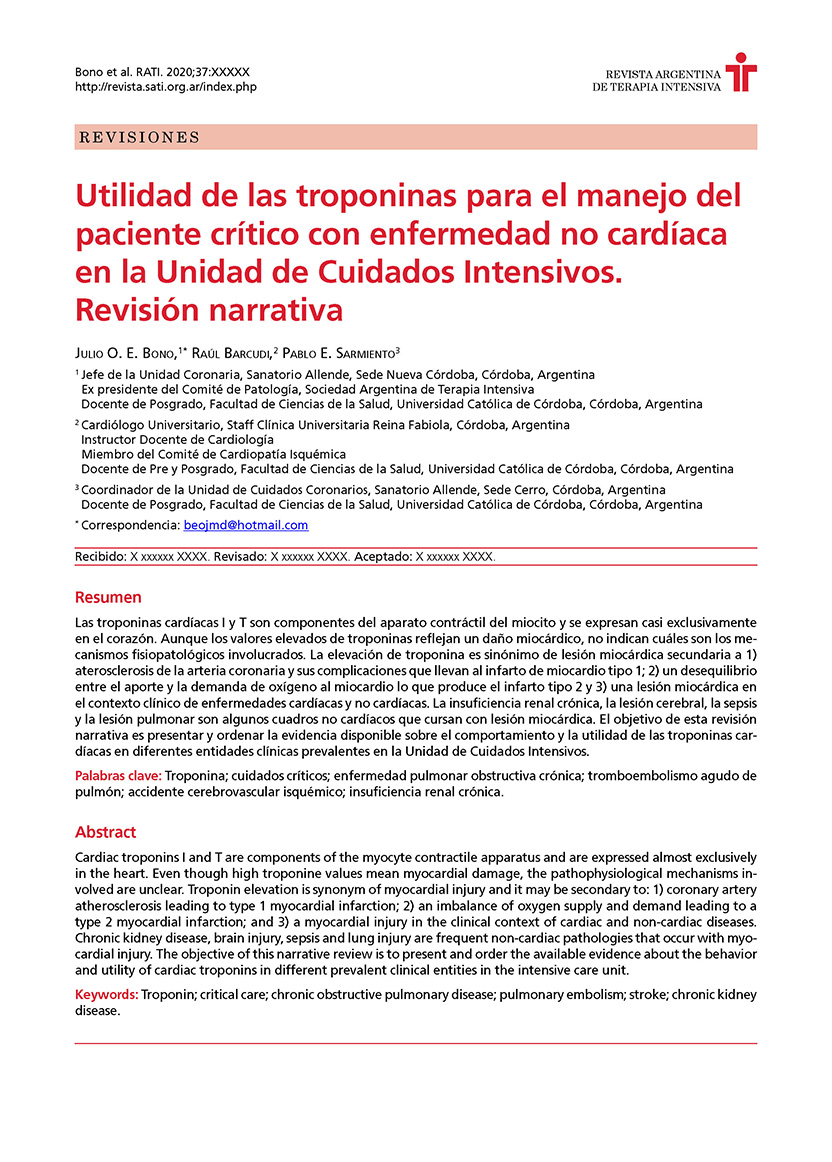Resumen
Las troponinas cardíacas I y T son componentes del aparato contráctil del miocito y se expresan casi exclusivamente en el corazón. Aunque los valores elevados de troponinas reflejan un daño miocárdico, no indican cuáles son los mecanismos fisiopatológicos involucrados. La elevación de troponina es sinónimo de lesión miocárdica secundaria a 1) aterosclerosis de la arteria coronaria y sus complicaciones que llevan al infarto de miocardio tipo 1; 2) un desequilibrio entre el aporte y la demanda de oxígeno al miocardio lo que produce el infarto tipo 2 y 3) una lesión miocárdica en el contexto clínico de enfermedades cardíacas y no cardíacas. La insuficiencia renal crónica, la lesión cerebral, la sepsis y la lesión pulmonar son algunos cuadros no cardíacos que cursan con lesión miocárdica. El objetivo de esta revisión narrativa es presentar y ordenar la evidencia disponible sobre el comportamiento y la utilidad de las troponinas cardíacas en diferentes entidades clínicas prevalentes en la Unidad de Cuidados Intensivos.
La revista no retiene los derechos de reproducción (copyright) por lo que los autores pueden volver a publicar sus trabajos con la sola mención a la fuente original de publicación.

